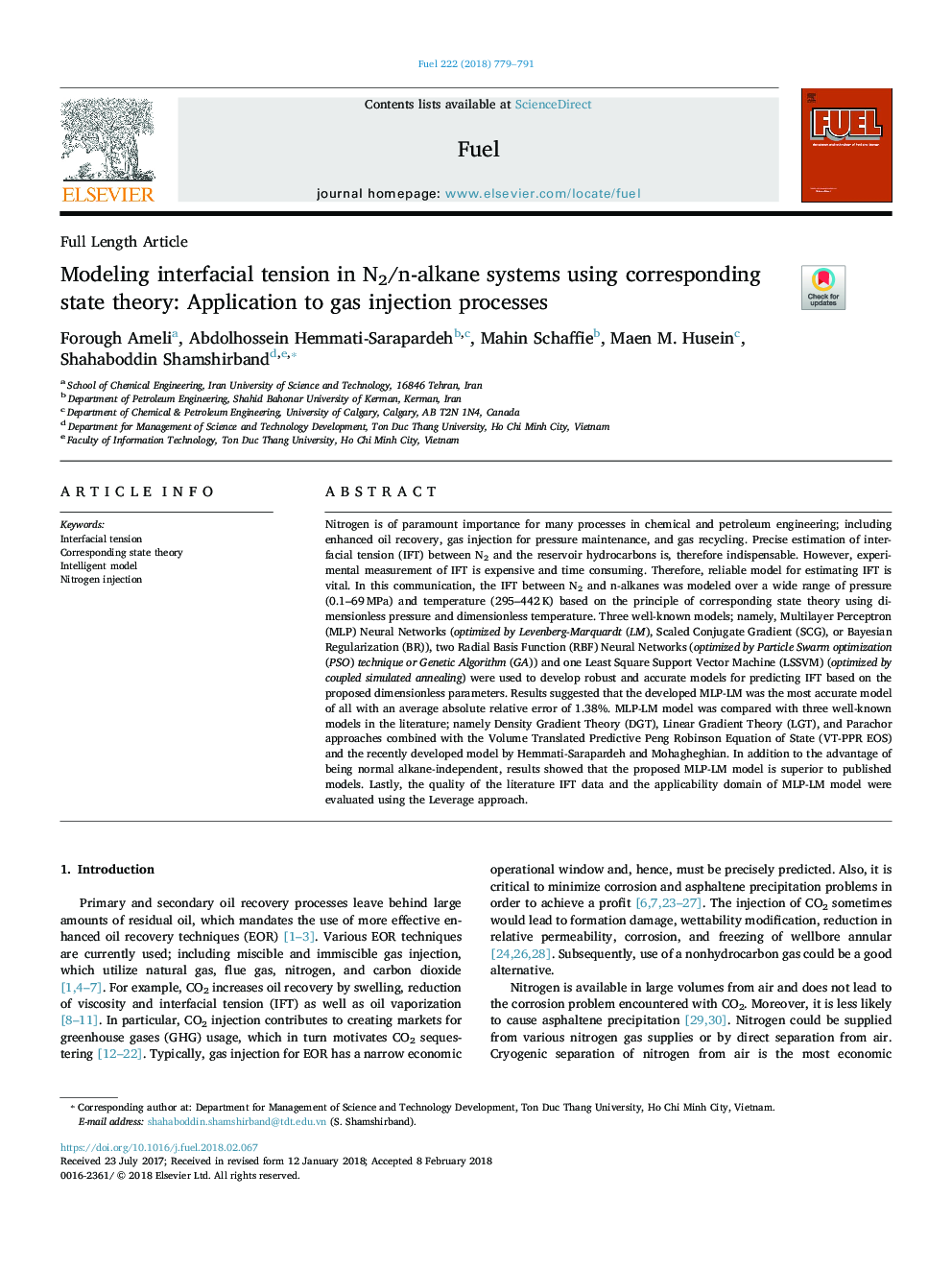| Article ID | Journal | Published Year | Pages | File Type |
|---|---|---|---|---|
| 6631470 | Fuel | 2018 | 13 Pages |
Abstract
Nitrogen is of paramount importance for many processes in chemical and petroleum engineering; including enhanced oil recovery, gas injection for pressure maintenance, and gas recycling. Precise estimation of interfacial tension (IFT) between N2 and the reservoir hydrocarbons is, therefore indispensable. However, experimental measurement of IFT is expensive and time consuming. Therefore, reliable model for estimating IFT is vital. In this communication, the IFT between N2 and n-alkanes was modeled over a wide range of pressure (0.1-69â¯MPa) and temperature (295-442â¯K) based on the principle of corresponding state theory using dimensionless pressure and dimensionless temperature. Three well-known models; namely, Multilayer Perceptron (MLP) Neural Networks (optimized by Levenberg-Marquardt (LM), Scaled Conjugate Gradient (SCG), or Bayesian Regularization (BR)), two Radial Basis Function (RBF) Neural Networks (optimized by Particle Swarm optimization (PSO) technique or Genetic Algorithm (GA)) and one Least Square Support Vector Machine (LSSVM) (optimized by coupled simulated annealing) were used to develop robust and accurate models for predicting IFT based on the proposed dimensionless parameters. Results suggested that the developed MLP-LM was the most accurate model of all with an average absolute relative error of 1.38%. MLP-LM model was compared with three well-known models in the literature; namely Density Gradient Theory (DGT), Linear Gradient Theory (LGT), and Parachor approaches combined with the Volume Translated Predictive Peng Robinson Equation of State (VT-PPR EOS) and the recently developed model by Hemmati-Sarapardeh and Mohagheghian. In addition to the advantage of being normal alkane-independent, results showed that the proposed MLP-LM model is superior to published models. Lastly, the quality of the literature IFT data and the applicability domain of MLP-LM model were evaluated using the Leverage approach.
Related Topics
Physical Sciences and Engineering
Chemical Engineering
Chemical Engineering (General)
Authors
Forough Ameli, Abdolhossein Hemmati-Sarapardeh, Mahin Schaffie, Maen M. Husein, Shahaboddin Shamshirband,
